#Murrays of Tullibardine
Text

This is my husband. I am Lady Tullibardine
0 notes
Text

The Most Honourable Michael Bruce John Murray, Marquess of Tullibardine.
18 notes
·
View notes
Text

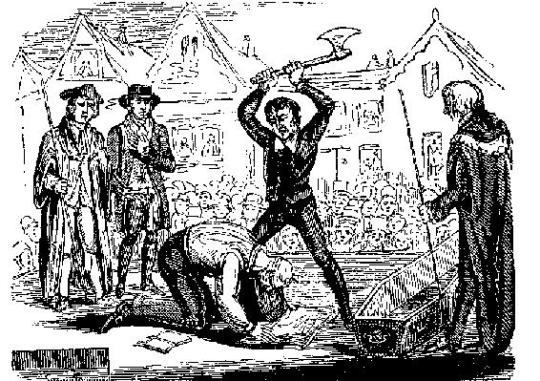
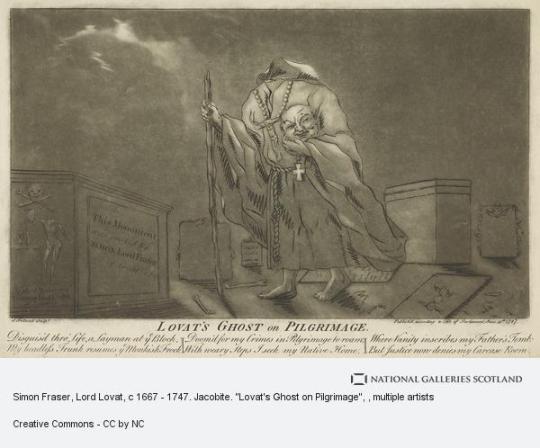

On 9th April 1747 Simon Fraser, Lord Lovat, the leading Scottish Jacobite rebel was beheaded on Tower Green.
A longer post than normal from me as in my opinion Simon Fraser was one of the most interesting characters in Jacobite history. A man of contrary, he was known to be very kind to the lesser clansmen taking a paternal interest in their affairs. A quote regarding him says that….“Generally he had a bag of farthings for when he walked abroad the contents of which he distributed among any beggars whom he met. He would stop a man on the road; inquire how many children he had; offer him sound advice; and promise to redress his grievances if he had any”
In his own estimate, he took care his clansmen were ‘always well-clothed and well-armed, after the Highland fashion, and not to suffer them to wear low-country clothes’ Lovat was also a brute of a man forcing a young woman into marriage and raping her in an attempt to legitimise the union. Lovat has become more well know lately thanks to Outlander, where in their world he is grandfather to the main protagonist Jamie Fraser and played brilliantly by the fine Scottish actor Clive Russell. Back in the real world he has been in the news in the recent past, I shall cover that at the end of this post.
Born in 1667 into the ancient clan who fought with distinction in the Wars of Independence – Sir Simon Fraser was one of the co-victors of the Battle of Roslin and his sons were close friends of Robert the Bruce, Alexander marrying Bruce’s sister Mary – Simon was the second son of Thomas Fraser of Beaufort who was closely related to Lord Hugh Fraser of Lovat, chief of clan Fraser.
Simon became his father’s heir when his elder brother was killed fighting alongside Bonnie Dundee against the forces of King William III at the Battle of Killiecrankie in 1689. He was still nowhere near being clan chief, however, and took himself off to Aberdeen University from which he graduated in 1695. Lord Hugh Fraser, the 9th Lord Lovat, was a weak man who unexpectedly signed over the clan leadership to Simon’s father in 1696.
Lord John Murray, Earl of Tullibardine and the most powerful man in Scotland, disputed the succession and fell out spectacularly with Simon in Edinburgh. The young Fraser hothead duly went north to Castle Dounie to try and persuade Hugh’s widow Amelia to give him the hand of her daughter, also Amelia, in a dynastic marriage that would seal his succession. Tullibardine was having none of it and moved his niece to the Murray stronghold, Blair Castle, where he planned to marry her off to Alexander Fraser, heir to the Lordship of Saltoun.
Simon retaliated by kidnapping Alexander and frightening him away, and to make matters worse in October, 1697, he went back to Castle Dounie and forced the widow Amelia into a sham wedding, raping her to consummate the “marriage”.
Tullibardine ensured Simon and his father were declared outlaws and when old Thomas died in 1699, Simon was unable to legally claim his title as 11th Lord Lovat which later passed to one Alexander Mackenzie who had legally married the younger Amelia.
Simon Fraser somehow managed to persuade King William that he was no threat, despite having his own personal army, and he was pardoned in 1700, only to be declared an outlaw again the following year over the forced marriage and rape.
Simon went off to the court of the Stuarts in France where he devised the plans that were eventually used in the 1715 and 1745 uprisings. Long before the former, however, Simon was double dealing, giving Queen Anne information about the plans of James, the Old Pretender. He was found out and King Louis XIV clapped him in jail for three years.
Even after he was released he was prevented from travelling to Scotland and thus missed the Act of Union which he opposed.
Still desperate to get his Lovat title and the chieftainship of his clan back, Simon sided with the forces of the new King, George I, during the ’15, and was given back his title as a reward, with Alexander Mackenzie imprisoned for being a Jacobite. The two men would fight in the courts for the next 15 years as to who was entitled to the income of the estate. Simon eventually won and spent his time building up the Fraser estates and wealth, even taking command of one of the Independent Companies of Highland soldiers established by the Hanoverian regime – the Fraser Highlanders.
As I said early Fraser was a man of contrary and to me was very like “Bobbing John” The Earl of Mar another Jacobite who a tendency to shift back and forth from faction to faction, no sooner had Fraser built up this “Hanoverian” army that he started openly campaigning for the restoration of the Stuarts. The Government responded by cancelling his military role.
When Bonnie Prince Charles landed in Scotland he was still playing games.
He allowed his sons to fight for the Stuarts, but stayed at home himself “loudly lamenting the wilful disobedience of children,” as Sarah Fraser has put it. Lovat did meet Charles, however, and expressed his anger at the lack of “siller” which he knew would be necessary for a successful campaign. They met again after Culloden, at which Clan Fraser fought bravely and suffered many casualties, and Lovat advised the prince to get away and re-form his forces. Charles fled through the heather, as we know, and made it to France while anyone associated with the Bonnie Prince was hunted down. The Duke of Cumberland’s troops were not taking any more games from Fraser and burned Castle Dounie.
Lovat managed to make it to Loch Morar but was captured there while hiding in a hollow tree. Although approaching his 80th birthday, The Fox was taken south to London.
He pled not guilty but his trial was a formality and he must have know his fate would be the same as previous nobles, the Earls of Kilmarnock, Balmerino and Derwentwater who were executed for treason the previous year.
At his trial, ever the Fox he insisted strongly upon his affection for the reigning family. Such were the characteristics of Simon Fraser, but of course he was found guilty the sentence, hanging, drawing and quartering was commuted later to a mere beheading by the King.
In a way, Lovat had the last laugh. Newspapers and pamphlets of the time recorded that as he was led out to the scaffold on Thursday, April 9, 1947, a wooden stand that had been erected near the Tower to seat crowds eager to see the execution collapsed sending hundreds plunging down. At least nine people died and dozens were injured, which amused Lovat – the phrase ‘laughing your head off’ is said to date from that event.
According to a woodcut print made on that fateful day, Lovat “with some composure laid his head on the block which the executioner took off with a single blow.”
As I mentioned at the top Lovat has been in the news quite recently. Simon had requested burial at the family mausoleum at Wardlaw near Inverness and the government initially agreed but changed its mind thinking his body could become a rallying point for further trouble. He was therefore buried in the floor of the chapel within the Tower of London, St. Peter ad Vincula. The chapel was refurbished in the 19th century and the floor was relaid. One of the coffins uncovered during the works had the nameplate of ‘Lord Lovat’. The names of those found are now recorded on a plaque on the wall of the chapel.
Fraser folklore, and written in several books says that his body was spirited away from London, the stories even go so far as to name the boat ‘The Pledger’ that sailed north to The Beauly Firth, where he was taken to the family mausoleum, there is even a plaque in the crypt that reads “In this coffin are laid the remains of Simon Lord Fraser of Lovat who, after twenty years in His own Land and abroad with the greatest distinction and renown, at the risk of his own life, restored and preserved his race, clan and household from the tyranny of the Athol and the treacherous plotting of the Mackenzies of Tarbat. To preserve an ancient house is not the greatest credit. Nor is there any honour for the enemy who despoiled it. Although that enemy was strong in his plotting and unrelenting warfare, yet Simon who was also skillful and cunning defeated him in war.“
In 2018 the headless skeleton inside the coffin was exhumed to be examined by experts from the University of Dundee in January this year they announced that the bones in the coffin did not belong to Simon Fraser, but to a young woman. So it looks like his body did end up rotting in The Tower’s Chapel, although the Frasers will still tell you otherwise.
Scottish actor Clive Russell played The Old Fox in the television adaptation off Outlander.
13 notes
·
View notes
Text
Balvaird Castle in Perthshire.
It is a traditional late medieval Scottish tower house. It is located in the Ochil Hills, around 5 kilometres south of Abernethy. The name Balvaird is from Baile a' Bhàird, 'Township of the Bard' in Gaelic.
Balvaird was built around the year 1495 for Sir Andrew Murray, a younger son of the family of Murray of Tullibardine.
He acquired the lands of Balvaird through marriage to the heiress Margaret Barclay, a member of a wealthy family and daughter of James Barclay of Kippo. It is likely that Balvaird Castle was built on the site of an earlier Barclay family castle.
Substantial remnants of earthwork fortifications around the Castle may survive from earlier defences.
Balvaird is first mentioned in the written historical record in 1498 as 'the place of Balward' in the Register of the Great Seal of Scotland.

5 notes
·
View notes
Text

William Murray, Marques of Tullibardine (14 April 1689—9 July 1746)
2 notes
·
View notes
Text
TULLIBARDINE DISTILLERY LAUNCHES NEW TRIPLE PORT FINISHED MURRAY BOTTLING — The Whisky Business
TULLIBARDINE DISTILLERY LAUNCHES NEW TRIPLE PORT FINISHED MURRAY BOTTLING — The Whisky Business
The Tullibardine Distillery, has today announced the launch of the latest expression from their limited-edition Marquess Collection. Tullibardine – The Murray Triple Port (46% ABV) which was distilled in 2008, is a single malt Scotch whisky, finished in a combination of White Port, Tawny Port and Ruby Port casks.Tullibardine – The Murray Triple PortThe Marquess…
TULLIBARDINE DISTILLERY LAUNCHES…

View On WordPress
0 notes
Photo

“Bruce Murray, 12th Duke of Atholl Sons are really cute.” - Submitted by Anonymous
20 notes
·
View notes
Text

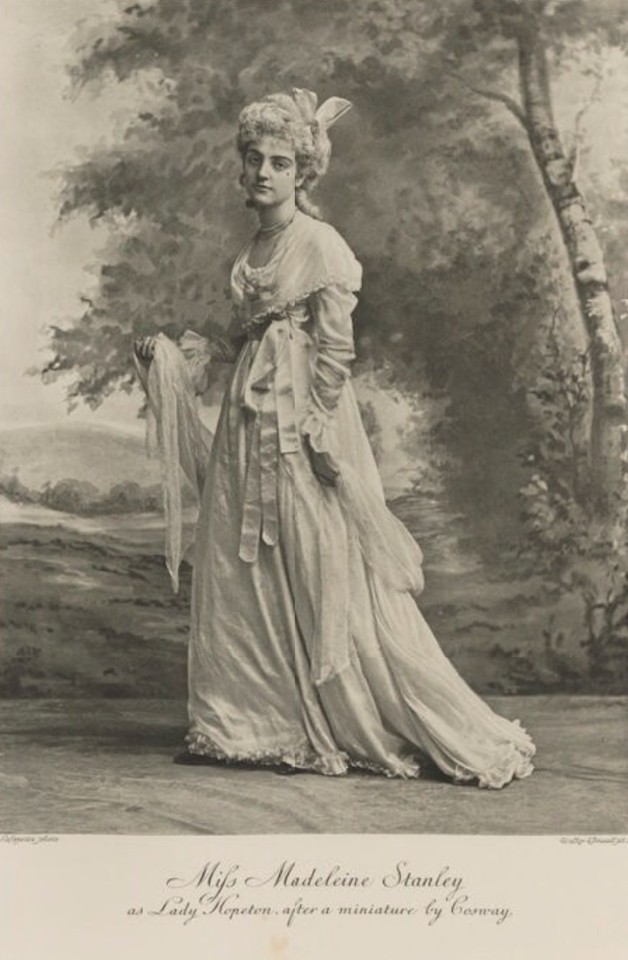


Masquers in 18th century costumes at the Devonshire ball in 1897;
Madeline Cecilia Carlyle Brodrick (née Stanley), Countess of Midleton as Lady Hopeton, after a miniature by Richard Cosway
Dame Edith Sophy Lyttelton (née Balfour) after a picture by George Romney
Florence Elizabeth Mary (née Glyn), Lady Portal and Sir William Wyndham Portal, 2nd Bt as Comte and Comtesse de Candale from 'Un Mariage sous Louis XV'
John George Stewart-Murray, 8th Duke of Atholl when Marquess of Tullibardine and Lord George Stewart-Murray as two Highland gentlemen from 1745
#historical costume#mdptheatre#masquerade#fete#19th century#18th century#devonshire ball#mdpcostume#Britain#traditional costume#traditional dress
211 notes
·
View notes
Photo

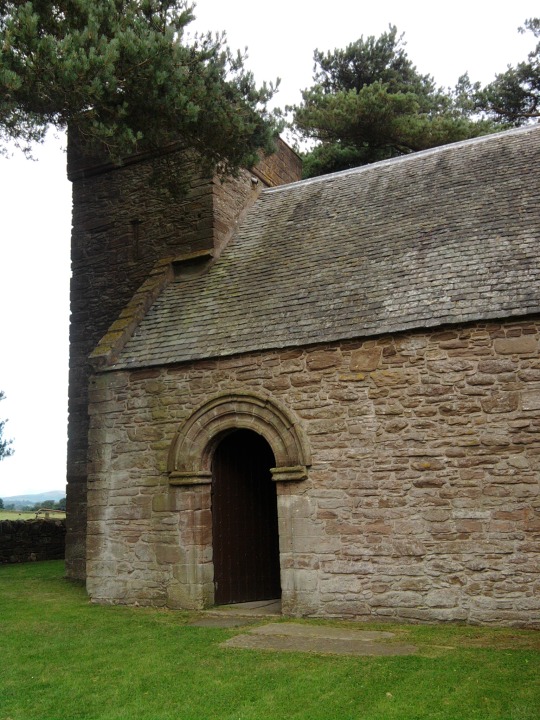

Places to Go: Tullibardine Chapel
A small kirk sheltered by Scots pines, Tullibardine Chapel has an air of tranquility and simple elegance. Formerly the private chapel of the Murrays of Tullibardine, it is one of the few buildings of its kind in Scotland to have survived with many of its medieval details intact.
The Murrays acquired the lands of Tullibardine in the late thirteenth century, when William ‘de Moravia’ married a daughter of the steward of Strathearn. Later, through judicious marriages and court connections, they first became earls of Tullibardine and then Dukes of Atholl. But even as lairds the Murrays were a significant power in late mediaeval Perthshire. In those days Tullibardine Castle was one of their main strongholds, and the close proximity of royal residences like Stirling meant that the Castle also hosted several notable guests. Mary, Queen of Scots, stayed there in December of 1566 (allegedly in the company of the earl of Bothwell). One laird of Tullibardine became Master of Household to the young James VI, while his aunt Annabella Murray, Countess of Mar, oversaw the king’s upbringing. Thus James VI was also a frequent visitor and it was he who created the earldom of Tullibardine in 1606. The king is known to have attended the wedding of the laird of Tullibardine’s daughter Lilias Murray, though it is unclear whether this took place at Tullibardine itself. The castle grounds were probably an impressive sight too: the sixteenth century writer Robert Lindsay of Pitscottie claimed that a group of hawthorns at the “zeit of Tilliebairne”* had been planted in the shape of the Great Michael by some of the wrights who worked on the famous ship.
Thus the tower at Tullibardine, though presumably on a small-scale, was apparently comfortable and imposing enough for the lairds to host royalty and fashion an impressive self-image. But the spiritual needs of a late mediaeval noble family were just as important as their political prestige, and a chapel could both shape the family’s public image and secure their private wellbeing. The current chapel at Tullibardine, which originally stood at a small distance from the castle, was allegedly founded by David Murray in 1446, “in honour of our blessed Saviour”. At least this was the story according to the eighteenth century writer John Spottiswoode, and his assertion is partly supported by the chapel’s internal evidence, though no surviving contemporary document explicitly confirms the tale. A chapel certainly existed by 1455, when a charter in favour of David’s son William Murray of Tullibardine mentions it as an existing structure. In this charter, King James II stated that his “familiar shieldbearer” William Murray has “intended to endow and infeft certain chaplains in the chapel of Tullibardine”. Since the earls of Strathearn had previously endowed a chaplain in the kirk of Muthill, but duties pertaining to the chaplaincy had not been undertaken for some time, James transferred the chaplaincy to Tullibardine. He also granted his patronage and gift of the chaplaincy to William Murray and his heirs.
The charter indicates that Tullibardine Chapel was an important project for the Murrays. Interestingly though, no official references to the chapel in the fifteenth, sixteenth, or seventeenth centuries describe Tullibardine chapel as a collegiate church, even though later writers have frequently claimed this. Collegiate foundations were increasingly popular with the Scottish nobility during the late Middle Ages, but, although such a foundation might have been planned for Tullibardine, there is no evidence that this ever took place.
The 1455 charter serves as an early indication of the chapel’s purpose and significance. Judging by its architecture the current chapel does appear to have been constructed in the mid-fifteenth century. However it was also substantially remodelled and enlarged around 1500, when the western tower was added. One remnant of the original design is the late Gothic ‘uncusped’ loop tracery on the windows. Despite the apparent simplicity of the chapel, features such as this window tracery have been taken as evidence that its builder was acutely aware of contemporary European architectural fashions. Another interesting feature is the survival of the chapel’s original timber collarbeam roof, a rare thing in Scotland. Several coats of arms belonging to members of the Murray family adorn the walls and roof corbels, although some of these armorial panels were probably moved when the chapel was reconstructed. They include the arms of the chapel’s alleged founder David Murray and his wife Margaret Colquhoun, as well as those of his parents, another David Murray and Isabel Stewart. A later member of the family, Andrew Murray, married a lady named Margaret Barclay c.1499, around the same time that the chapel was renovated, and although they were buried elsewhere, their coats of arms can also be seen there. Aside from such details- carved in stone and thus less perishable than books and vestments- the chapel’s interior seems quite sparse and bare today. Originally though the mediaeval building probably housed several richly furnished altars and some of the piscinas (hand-washing stations for priests) can still be seen in the walls. But the sumptuous display favoured in even the smallest mediaeval chapels was soon to be swept away entirely by the Reformation of 1560, when Scotland broke with the Catholic Church and Protestantism became the established faith of the realm.
Tullibardine was used chiefly as a private burial place after the Reformation, but there are signs that the transition from one faith to another was not entirely smooth. Four years after the “official” Reformation, a priest named Sir Patrick Fergy was summoned before the “Superintendent” of Fife, Fothriff, and Strathearn to answer the charge that he had taken it upon himself “to prech and minister the sacramentis wythowtyn lawfull admission, and for drawing of the pepill to the chapel of Tulebarne fra thar parroche kyrk”. Fergy did not obey the summons and so it was decided that he should be summoned for a second admonition. It is not known whether Fergy compeared on that occasion, nor what kind of punishment he might have received for his defiance. We are also in the dark as to the laird of Tullibardine’s views on the situation, even though it was going on right under his family’s nose. Nonetheless the case does provide a glimpse into what must have been a complex religious situation in sixteenth century Perthshire, no less for the ordinary parishioner than for the nobility. It also raises the possibility that private worship continued in the chapel after the Reformation, albeit unofficially.
Even as Tullibardine chapel’s public role diminished, the castle was still of some importance. Royal visits must have been considerably rarer after James VI succeeded to the English throne in 1603, and the Murrays of Tullibardine themselves acquired greater titles and estates, but the tower at Tullibardine still witnessed some notable events. During the first half of the eighteenth century, the castle was the home of Lord George Murray, a kinsman of the Duke of Atholl and famous for his participation in the Jacobite Risings of 1715, 1719, and 1745. During the last of these, Tullibardine Castle played host to a Jacobite garrison and was visited by Charles Edward Stuart. In less warlike times, Lord Murray often resided with his family at Tullibardine, and one of his daughters, who sadly died in infancy, seems to have been buried in the chapel. Lord George himself expressed a wish to be buried there as well but he was forced to flee into exile on the continent after the failure of the ’45, and so his body was interred “over the water” at Medemblick, in the Netherlands.
After Lord George’s exile Tullibardine castle entered a period of slow decline. Much of the fabric of the building was removed in 1747. Some years earlier plans had been made for the old tower to be replaced by a fashionable new house designed by William Adam, but these never materialised. A sketch of the mediaeval chapel made in 1789 shows the castle in the background- a roofless, tumbledown ruin. Tullibardine castle was finally demolished in 1833, and the family chapel, whose very existence had for centuries been defined by its proximity to the laird’s house, now stands alone. We are thus all the more fortunate for its survival, and both its attractive situation and interesting mediaeval features make Tullibardine chapel well worth a visit.
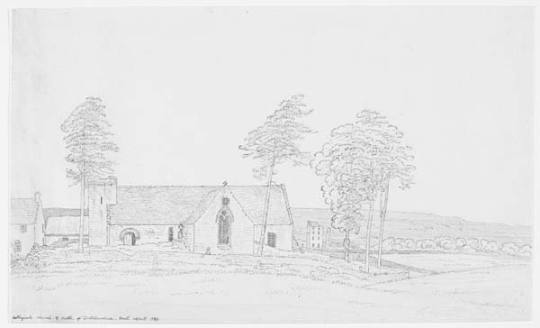
(Tullibardine Chapel, with the castle ruins in the background, as sketched in 1789. Reproduced with permission of the National Libraries of Scotland, under the terms of the Creative Commons Attribution 4.0 License)
Sources and notes may be found under the ‘read more’ button.
* “zeit” is presumaby “yett”, the old Scots word for gate.
Selected Bibliography:
- “Account of All the Religious Houses That Were in Scotland at the Time of the Reformation”, by John Spottiswood, in “An Historical Catalogue of the Scottish Bishops Down to the Year 1688″, by Reverend Robert Keith.
- Seventh Report of the Royal Commission on Historical Manuscripts, Part 2 (Duke of Atholl papers)
- “Register of the Ministers, Elders, and Deacons of the Congregation of St Andrews”, volume 4, Part 1 (St Andrews Kirk Session Register), edited by David Hay Fleming
- “Statement of Significance: Tullibardine Chapel”, Historic Environment Scotland
- “The Historie and Croniclis of Scotland From the Slauchter of King James the First to the Ane Thousande Five Hundreith Thrie Scoir Fiftein Zeir”, by Robert Lindsay of Pitscottie, volume 1 edited Aeneas J. G. Mackay.
- “Late Gothic Architecture in Scotland: Considerations on the Influence of the Low Countries”, by Richard Fawcett in ‘Proceedings of the Society of Antiquaries Scotland’, 112 (1982)
- “Aspects of Timber in Renaissance and Post-Renaissance Scotland: The Case of Stirling Palace”, Thorsten Hanke
- “Register of the Privy Seal of Scotland”, Vol. 5, ed. M. Livingstone
- “The Household and Court of King James VI”, Amy L. Juhala
- “Memoirs of the Affairs of Scotland”, by David Moysie, ed. James Dennistoun for the Bannatyne Club
- “Calendar of State Papers, Scotland”, Volume 10, 1589-93, ed. William K. Boyd and Henry W. Meikle
- “The Indictment of Mary Queen of Scots, as Derived from a Manuscript in the University Library at Cambridge, Hitherto Unpublished”, by George Buchanan, edited by R.H. Mahon
#Scottish history#Scotland#British history#Perthshire#Places to go#Strathearn#Tullibardine Chapel#Tullibardine#Auchterarder#fifteenth century#sixteenth century#eighteenth century#1450s#1500s#building#architecture#Gothic Architecture#kirk and people#religion#Church#Christianity#private chapel#chapel#Murray family#Murrays of Tullibardine#Murray#Duke of Atholl#Jacobites#James VI#Mary Queen of Scots
9 notes
·
View notes
Text
Blair Castle
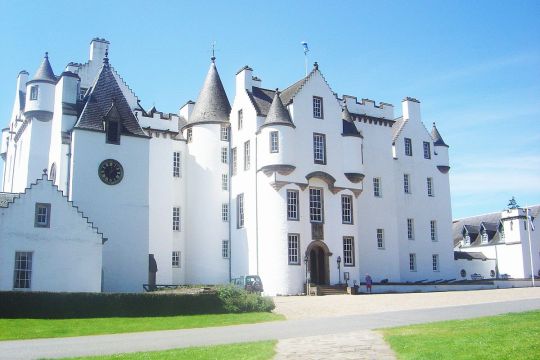


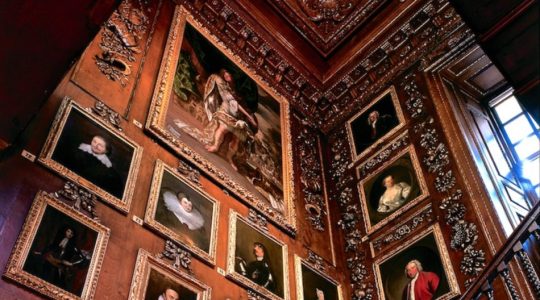
Blair Castle is located in the village of Blair Atholl, in the town of Pitlochry, Scotland. The castle is the ancestral home of the Murray Clan. Over 19 generations of the Stewarts and Murray’s of Atholl lived at the castle. The earliest part of the present castle is Comyn’s Tower, which was built in 1269. The Great Hall was added in 1530, along with a series of vaulted chambers below. In 1740, the castle was transformed into a Georgian house with elaborate plasterwork and cabinets. The 7thDuke of Atholl had the exterior remodeled in the late 19thcentury. The crenellations and turrets that were removed during the Georgian period were reinstated, and a new entrance hall and ballroom were added. Upgrades that included bathrooms, telephones, and gas were also added at this time. During WWI, the castle was used at an auxiliary hospital and the family lived in the private apartments. In 1908, a hydroelectric system was reinstated to provide power to the castle. An exhibition hall was also added to display the furnishings and paintings collected throughout the castle’s history. Blair Castle is open to the public. The castle has a gift shop, the Tullibardine Restaurant, kids activities, and a variety of self-catering accommodations available on the property. (Currently closed)
4 notes
·
View notes
Text
The Battle of Glen Shiel

Today marks the 300th anniversary of the only pitched battle in one of the least-remembered Jacobite ventures, the mini-rising of 1719. Among claims to fame, the battle of Glen Shiel was also unusual in that it featured Jacobite highlanders, usually assault troops par excellence, holding defensive positions against government attacks, and also saw the first battlefield use of Coehorn mortar shells by the British Army. It also saw a Spanish soldier die of heat-stroke in the highlands of Scotland.
Tullibardine, the Jacobite commander, prepared a strong position near the Five Sisters hills of Glen Sheil, with the Spanish soldiers sent to assist the Jacobite rebellion holding the centre and his highlanders on the flanks behind a series of trenches and barricades. A force of British soldiers (most of them Scottish) commanded by General Joseph Wightman arrived about 4:00 pm on 10 June and began the attack an hour later by firing their mortars at the Jacobite flanking positions. This caused few casualties but the highlanders had not encountered mortars before, allowing four platoons of Clayton's and Munro's government infantry to advance up the hill to their lines, then use grenades to bomb them out of their positions.

Once the Jacobite right had been dislodged, regiments under Colonels Harrison and Montague attacked the Jacobite left under Lord Seaforth. This was strongly entrenched behind a group of rocks on the hillside but skilful use of the mortars forced Seaforth's men to give way while he himself was badly wounded. The Spanish in the centre stood their ground but had to withdraw up the mountain as their flanks gave way.
The battle lasted until 9:00 pm; several accounts claim the heather caught fire and smoke combined with failing light enabled the bulk of the Scots to disappear into the night. The Spanish surrendered next morning and as regular troops were shipped home; Lord George Murray, Seaforth and Tullibardine were wounded but the Jacobite leaders also managed to escape. An analysis by historian Peter Simpson attributes Wightman's victory to skilful use of mortars, the superior firepower of his grenadiers and the aggression shown by his infantry, especially the Clan Munro highlanders loyal to the British government.

#battle of glen shiel#glen shiel#scotland#scottish#Scottish highlands#highlands#Scottish history#scots#highlander#highlanders#jacobite#jacobites#1719#jacobite rising#outlande#rjacobite risings#british army#redcoat#redcoats#loyalist#history#military history
149 notes
·
View notes
Photo
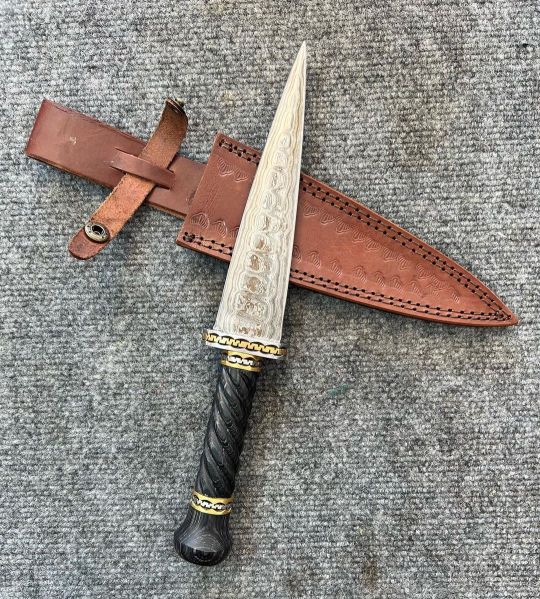
This knife originally belonged to the John Murray the 1st Earl of Tullibardine…..it was used by his son Bill at the Battle of Glenlivet in 1594…….it made it to America with Scots-Irish immigrants in the 1700’s and ultimately made its way to League City Texas for me to sharpen today. Just kidding it was purchased at the renaissance fair. 😜 Find us, follow us and like us on social media and call or text for an appointment. https://linktr.ee/SharpenRightServices #hunting #fishing #camping #knife #knifesharpening #huntingknives #fishingknives #campingknife #campknife #bushcraft #bushcraftingknife # camp #edc #knifemakers #knifemaking #sharpening #bushcrafting #campgear #bushcraftgear Call or text 832-640-6453 for an appointment to have your salon, barber, grooming shears, clipper blades, sewing and utility scissors and just about any knife sharpened. In salon and mail in sharpening is available. See our website SharpenRight.com Find us, follow us and like us on Facebook, Twitter, Instagram, Tumblr, Google, Yelp and Nextdoor. (at Texas) https://www.instagram.com/p/CbLaOUqJDIz/?utm_medium=tumblr
#hunting#fishing#camping#knife#knifesharpening#huntingknives#fishingknives#campingknife#campknife#bushcraft#bushcraftingknife#edc#knifemakers#knifemaking#sharpening#bushcrafting#campgear#bushcraftgear
0 notes
Photo

The Most Honourable Michael Bruce John Murray, Marquess of Tullibardine.
26 notes
·
View notes
Text

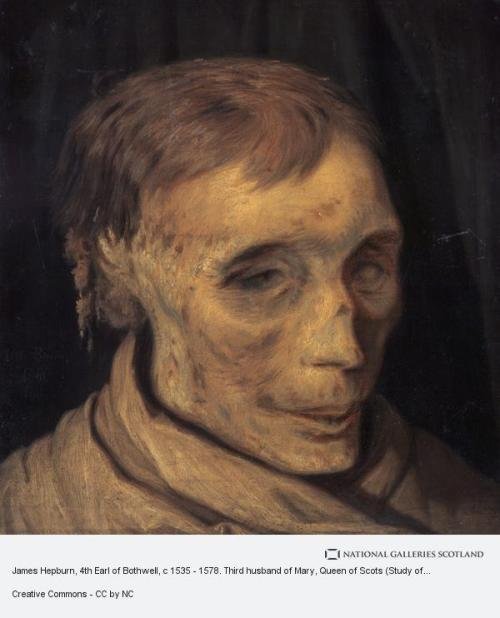

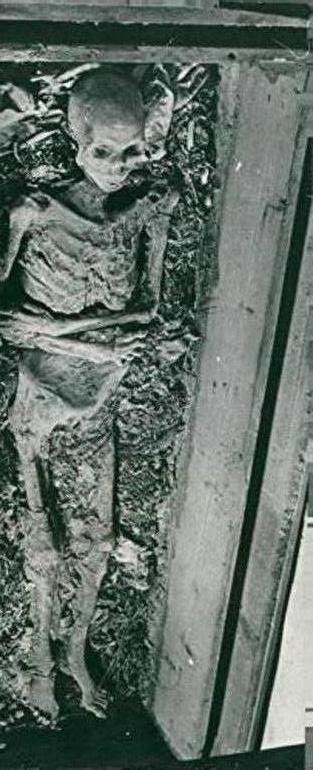
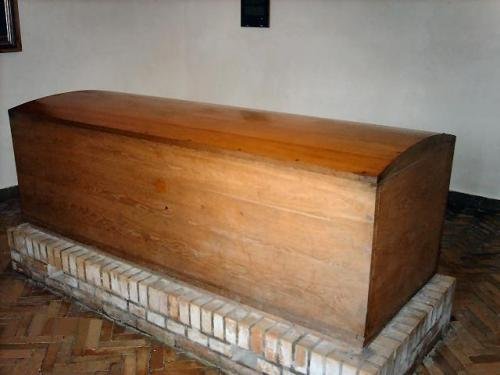
On April 14th 1578 James Hepburn, 4th Earl of Bothwell , Earl of Orkney and third husband of Mary Queen of Scots died, aged 44, tied to a post in a dungeon at, Denmark.
As I posted on Friday Bothwell fled Scotland after the surrender at Carberry Hill, Queen Mary’s last act of love for him was guaranteeing he could leave the area unharmed.
Bothwell took ship from Aberdeen to Shetland, he may have stopped off in Orkney, the only thing we know is he was denied refuge there and travelled on to Shetland.
He was pursued by Sir William Kirkcaldy of Grange and William Murray of Tullibardine who it seems were not that far behind him. They sailed into Bressay Sound near Lerwick. Four of Bothwell’s ships in the Sound set sail north to Unst where Hepburn and his cousin, the pirate, Olaf Sinclair were negotiating with German captains to hire more ships. Kirkcaldy’s flagship The Lion, chased one of Bothwell’s ships, and both ships were damaged on a submerged rock.
Bothwell sent his treasure ship to Scalloway and fought a three-hour-long sea battle off the Port of Unst where the mast of one of his ships was shot away. During the chase a storm erupted and Bothwell’s superior seamanship to come to his rescue. After transferring his men to his two remaining ships, he sailed south-east before the wind, making the 250-mile crossing in record time Although Kirkcaldy followed for sixty miles, he was out-sailed and, by his own admission, was ‘no good seaman’.
He might have thought he was off the hook again, but no, Frederick II was not sympathetic to his cause, he was at war, and was torn between his blood ties to Mary Queen of Scots and the need to show loyalty to his Protestant allies. Fortunately for him, the problem solved itself when Mary, held prisoner in England, dissolved her marriage to Bothwell, making him merely a problem to be got rid of from Frederik’s perspective, so he ordered his arrest to be used as a bargaining chip in the forlorn hope that he would be traded in return for the return of the Northern Isle!
After being brought before the Bergen magistrates, in September he was carried to Copenhagen on one of Frederick’s ships for ‘honourable confinement’ at Dragshorn Castle, the Scandinavian equivalent of the Tower Of London. I found an extract from My Heart is My Own, a biography on Mary Queen of Scots that reads
“On 14th April 1578, Bothwell died at Dragsholm. As was customary for state prisoners, his body was carried to the promontory that juts into the fjord a side of things. mile or so from the castle and buried at the parish church of Fårevejle. (…) “
There are differing versions on how he lived out his last days, one says he was actually not held in ‘honourable confinement’, but in a small dungeon chained to a post, the cell so small he was unable to stand, the second is more in the line of the ‘honourable confinement’ that he spent the last years drinking to excess with others held at the castle and gradually became more and more insane.
John Maxwell, visited Dragshorn Castle, and reported that Hepburn had latterly become overgrown with hair and filth. I take it from this he was still alive at the time!
The story doesn’t quite end there, Bothwell’s coffin was opened for the first time in 1868 and a very well-preserved body was found, which subsequently rapidly decayed and, for a period of time, until 1973, was open to public viewing under a glass lid. Then, in response to a request from the descendants of the Hepburn family, the newly-crowned Margrethe II had Bothwell buried in a zinc-lined coffin within a sarcophagus of oak, and here he remains.
Every now and then there is a story in the press about his descendents making an attempt for his body to be repatriated, I have no idea why the Danes would not allow this and for the moment he remains there. Of course with a story like this the castle is said to be haunted by the "good” Earl, where is he said to ride through the courtyard with a full horse and carriage.
The pictures are, the supposed head of Bothwell “ Study of Mummified Head” by Danish artist Otto Bache. The even more gruesome “body of James Hepburn” although the church where his supposed remains lie was known to have exhibited several bodies over the years as his, therefore, it is impossible to know if this is actually him.
There have been moves by his descendants to have his body repatriated through the years Speaking in 2010 Sir Alastair Buchan-Hepburn, Bothwell's direct descendant sought to raise funds to lobby the Scottish and Danish governments, saying "I want the Scottish culture minister to get in touch with his Danish counterpart to ask him 'would you please consider to return the body of James Hepburn, the Earl of Bothwell?'"
James Hepburn, 4th Earl of Bothwells’ remains are now kept in the crypt at the church at Faravejle, near Dragsholm Castle, as seen in the last pic.
7 notes
·
View notes
Text
Murrays’ Angus sells to $18.5k
Murrays’ Angus sells to $18.5k
Tullibardine Angus bulls reached a stud record $18,500 top price while Murray Grey bulls sold to $7000 at the Murray family’s annual bull sale at Albany last Wednesday.
The sale, conducted by Elders, offered 29 Angus bulls, resulting in 28 sold to a stud record average price of $9848, while eight of the 14 Murray Grey bulls offered sold to an average price of $4719.
Nannup commercial producer Kim…
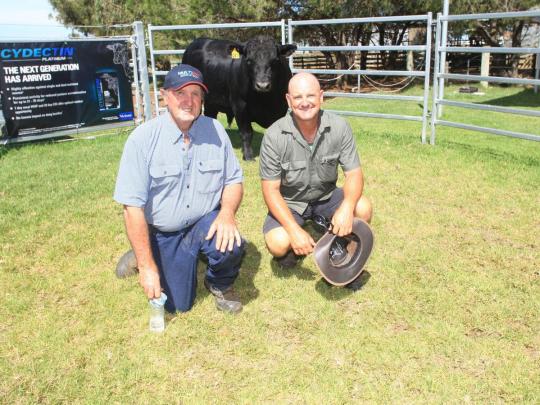
View On WordPress
0 notes
Text
Me: I need sleep. Let's get the fuck to sleep.
My brain: You know, James Murray was the 2nd Duke of Atholl, but only because, during the the 1715 Jacobite Rising, he was made the Marquess of Tullibardine, when his brother, the Marquess up until 1715, got caught participating in the Jacobite Rebellion.
#why am i like this#please just let me sleep#why do i even care who the marquess of tullibardine was in 1715?#scottish history#marquess of tullibardine#there must be a reason i'm obsessed with this particular part of history#why does it matter
4 notes
·
View notes